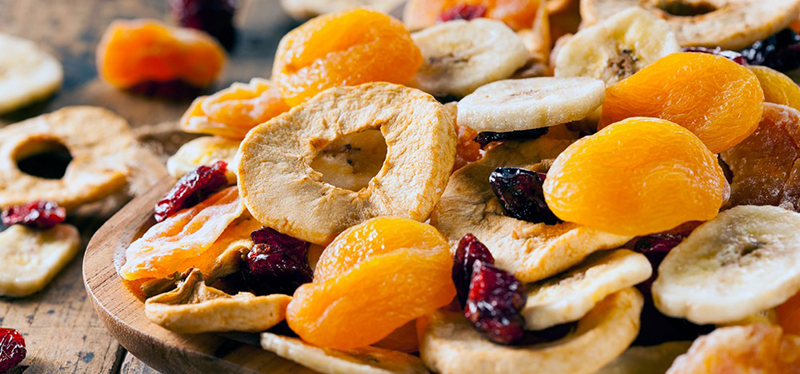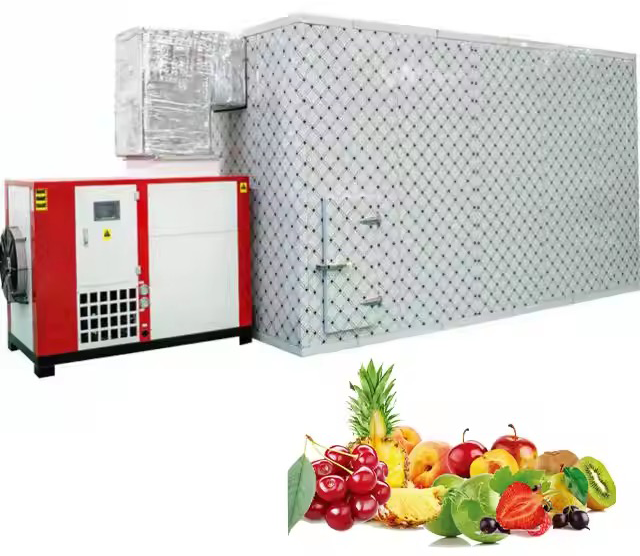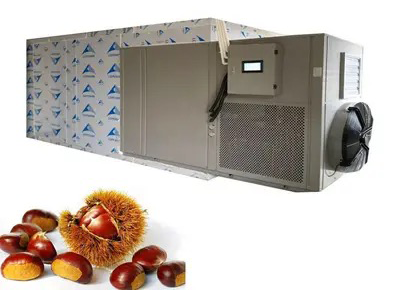
Content Menu
● Understanding Condenser Heat Pump Dryers
● Benefits of Using a Condenser Heat Pump Dryer
● Features to Look For
>> 1. Temperature Control Range
>> 2. Humidity Control
>> 3. Capacity
>> 4. Energy Consumption
>> 5. Automation Features
>> 6. Build Quality
>> 7. Maintenance Requirements
● How Does a Condenser Heat Pump Dryer Work?
● Applications of Condenser Heat Pump Dryers
● Considerations for Choosing a Condenser Heat Pump Dryer
>> 1. Budget Constraints
>> 2. Brand Reputation
>> 3. User Reviews
>> 4. Technical Support
>> 5. Compliance with Regulations
● Innovations in Condenser Heat Pump Technology
● Conclusion
● FAQ
>> 1. What is a condenser heat pump dryer?
>> 2. How does it differ from traditional dryers?
>> 3. What types of foods can be dried using this technology?
>> 4. Are these dryers energy-efficient?
>> 5. How do I maintain my condenser heat pump dryer?
● Citations:
Food dehydration is an age-old method of preserving food, allowing it to last longer while retaining its flavor and nutrients. As a manufacturer of food drying machines, particularly condenser heat pump dryers, it is essential to understand the features that make these devices effective and efficient. This article will explore the critical aspects of condenser heat pump dryers, their benefits, and what to consider when selecting one for your food processing needs.

Understanding Condenser Heat Pump Dryers
A condenser heat pump dryer operates on the principle of extracting moisture from food while using minimal energy. Unlike traditional drying methods that rely on high temperatures, these dryers utilize a closed-loop system that captures and recycles heat. This not only conserves energy but also preserves the quality of the food being dried.
Key Components:
- Heat Pump: The heart of the system, it absorbs heat from the environment and transfers it to the drying chamber.
- Condenser: This component cools down the air, condensing moisture into water, which is then expelled from the system.
- Fans: They circulate warm air throughout the drying chamber, ensuring even drying.
- Control System: Modern dryers come with intelligent control systems that allow precise adjustments to temperature and humidity levels.
Benefits of Using a Condenser Heat Pump Dryer
Using a condenser heat pump dryer offers numerous advantages:
- Energy Efficiency: These dryers consume significantly less energy compared to conventional dryers due to their ability to recycle heat.
- Low Operating Temperatures: They operate at lower temperatures, which helps in retaining the nutritional value and flavor of the food.
- Versatility: Suitable for a wide range of products, including fruits, vegetables, herbs, and meats.
- Environmentally Friendly: The closed-loop system minimizes energy waste and reduces environmental impact.
Features to Look For
When selecting a condenser heat pump dryer for your business, consider the following features:
1. Temperature Control Range
The ability to set a wide range of temperatures is crucial. Look for machines that offer adjustable settings from 30°C to 75°C (86°F to 167°F), allowing you to dry various foods optimally.
2. Humidity Control
Effective humidity control is essential for preventing spoilage and ensuring consistent drying results. A good dryer should have built-in sensors that monitor humidity levels and adjust accordingly.
3. Capacity
Choose a dryer with adequate capacity based on your production needs. Models can vary significantly in size, so consider how much product you plan to dry at once.
4. Energy Consumption
Evaluate the energy efficiency ratings of different models. An energy-efficient machine will save costs in the long run while being better for the environment.
5. Automation Features
Automated systems with programmable settings can enhance usability by allowing you to set drying cycles without constant monitoring. Look for models with digital displays and timers.
6. Build Quality
Durability is key in industrial settings. Select dryers made from high-quality materials that can withstand frequent use without compromising performance.
7. Maintenance Requirements
Consider how easy it is to maintain the dryer. Models with removable parts for cleaning are generally more user-friendly and can help prolong the machine's lifespan.
How Does a Condenser Heat Pump Dryer Work?
The operation of a condenser heat pump dryer involves several steps:
1. Air Intake: The machine draws in ambient air.
2. Heat Absorption: The heat pump extracts heat from this air and transfers it into the drying chamber.
3. Drying Process: Warm air circulates around the food items placed on trays within the chamber, evaporating moisture.
4. Condensation: Moist air is cooled down by the condenser, causing water vapor to condense into liquid form.
5. Water Removal: The condensed water is drained away, maintaining low humidity levels inside the dryer.
6. Recycling Heat: The cooled air is reheated by passing through the heat pump again, creating an efficient cycle.

Applications of Condenser Heat Pump Dryers
Condenser heat pump dryers are versatile and can be used in various applications:
- Fruit Drying: Ideal for producing dried fruits like apples, bananas, and mangoes without losing flavor or nutrients.
- Vegetable Drying: Effective for dehydrating vegetables such as carrots, peppers, and tomatoes.
- Herb Drying: Perfect for retaining essential oils in herbs like basil and thyme.
- Meat Drying: Suitable for making jerky or preserving meats while ensuring safety through proper temperature control.
Considerations for Choosing a Condenser Heat Pump Dryer
When selecting a condenser heat pump dryer for your business needs, there are several considerations beyond just features:
1. Budget Constraints
While it's tempting to opt for cheaper models, investing in a high-quality dryer can yield better long-term results in terms of efficiency and durability. Assess your budget carefully while considering potential savings on energy bills over time.
2. Brand Reputation
Research different manufacturers and their reputations in the market. Established brands often provide better customer service and warranties compared to lesser-known ones.
3. User Reviews
Look for user reviews online or request testimonials from other businesses that have used specific models you are considering. Real-world experiences can provide valuable insights into performance and reliability.
4. Technical Support
Ensure that technical support is available should any issues arise with your machine after purchase. A responsive customer service team can save you time and money during downtime.
5. Compliance with Regulations
Depending on your location or industry standards, ensure that any equipment you purchase complies with local regulations regarding food safety and processing standards.
Innovations in Condenser Heat Pump Technology
The field of food drying technology continues to evolve with innovations aimed at improving efficiency and effectiveness:
- Smart Technology Integration: Many modern dryers now come equipped with IoT capabilities that allow remote monitoring and control via smartphone apps or web interfaces.
- Advanced Sensors: Enhanced sensors can provide real-time data on moisture levels, temperature fluctuations, and energy consumption metrics for better decision-making during operations.
- Eco-Friendly Refrigerants: Newer models are using eco-friendly refrigerants that have lower global warming potential compared to traditional options.
- Hybrid Systems: Some manufacturers are developing hybrid systems that combine traditional drying methods with heat pump technology for even greater efficiency depending on specific product requirements.
Conclusion
Choosing the right condenser heat pump dryer can significantly impact your food processing operations. By focusing on features such as temperature control range, humidity management, capacity, energy efficiency, automation capabilities, build quality, maintenance needs, budget constraints, brand reputation, user reviews, technical support availability, compliance with regulations, and innovations in technology; you can select a machine that meets your specific requirements while maximizing productivity and preserving food quality.

FAQ
1. What is a condenser heat pump dryer?
A condenser heat pump dryer is an appliance that uses a closed-loop system to remove moisture from food at low temperatures while recycling heat for energy efficiency.
2. How does it differ from traditional dryers?
Unlike traditional dryers that use high temperatures to evaporate moisture quickly, condenser heat pump dryers operate at lower temperatures which helps retain nutrients and flavors in food.
3. What types of foods can be dried using this technology?
You can dehydrate a wide variety of foods including fruits, vegetables, herbs, and meats effectively using a condenser heat pump dryer.
4. Are these dryers energy-efficient?
Yes, they are designed to be energy-efficient by recycling heat within a closed system which minimizes energy consumption compared to conventional drying methods.
5. How do I maintain my condenser heat pump dryer?
Regular cleaning of trays and filters along with periodic checks on seals and fans will help maintain optimal performance. Always refer to the manufacturer's guidelines for specific maintenance instructions.
Citations:
[1] https://nchfp.uga.edu/how/dry/drying-general/food-dehydrators/
[2] https://cosori.com/blogs/blog/how-does-a-food-dehydrator-work
[3] https://www.goodhousekeeping.com/appliances/a31904157/what-is-a-dehydrator/
[4] https://www.gelgoogdryer.com/machine/heat-pump-dehydrator.html
[5] https://www.vecteezy.com/free-photos/food-dehydrator
[6] https://www.youtube.com/watch?v=mtDzdYoyeR8
[7] https://excaliburdehydrator.com/pages/dehydrator-features
[8] https://www.webstaurantstore.com/guide/741/food-dehydrators-buying-guide.html
[9] https://www.freepik.com/free-photos-vectors/food-dehydrator
[10] https://www.youtube.com/watch?v=lEUA2t2XD5M











